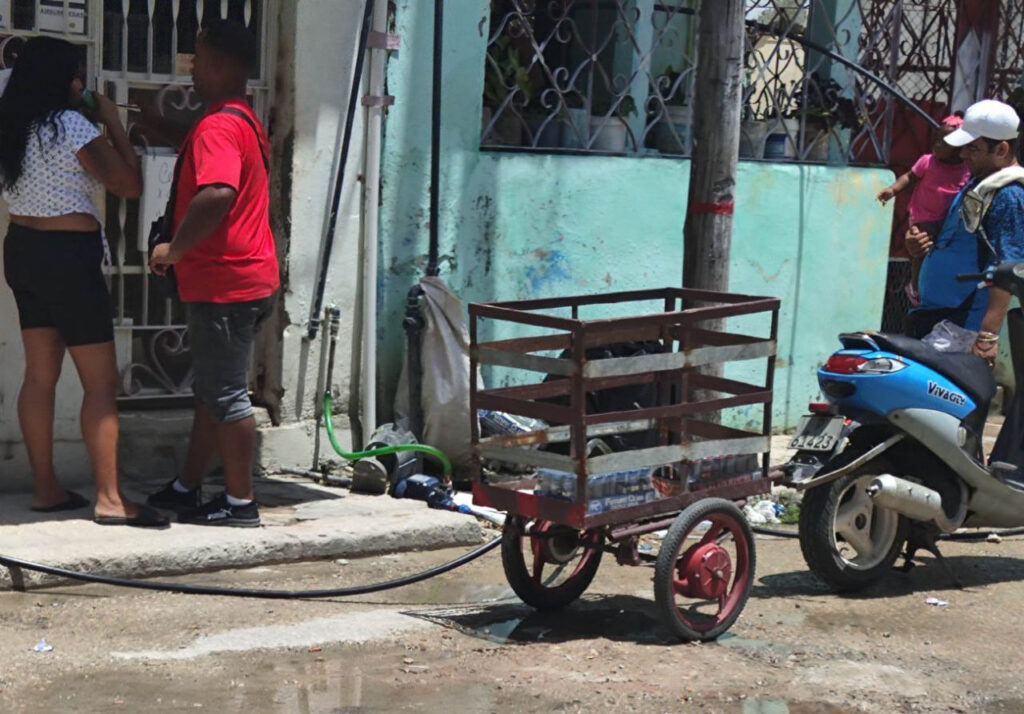Ten generators donated by China will provide 18 MW to Sancti Spíritus and Cienfuegos when there is fuel

14ymedio, Madrid, September 18, 2024 — More than a million users are now affected by water cuts in Cuba. In the first week of September the authorities admitted that the figure was about 600,000 people. A few days later, the increase was significant, with an average of 713,000, to which are added “some 300,000 people who receive water from the “pipas,” the tanker trucks, whose cycles can be more than 15 days,” explained Antonio Rodríguez, president of the National Institute of Hydraulic Resources (INRH), this Tuesday on State TV’s Round Table program.
The official explained that those who receive the supply by tanker trucks have “in some cases very extended cycles” (low frequency) and summarized the three fundamental problems: the state of the pumping equipment, the lack of electricity and the breaks in the main pipes.
“At the moment, 40% of the affectations are from broken pumping equipment and 39% from lack of electricity, and that has been happening since October,” he summarized. Rodríguez explained that they are working together with the Unión Eléctrica de Cuba (UNE) to minimize the problems caused by the lack of fuel. The main task is for the electric generators to relieve the blackouts; that’s why the INRH has increased its supply capacity from 36% to 72%, but, he says, there is not always enough fuel for them to work.
The main task is for the electric generators to relieve the blackouts; that’s why the INRH has increased its supply capacity from 36% to 72%, but, he says, there is not always fuel for them to work
In this context and after a deficit of more than 1,000 MW reported yesterday at peak hour, the authorities announced that the Communist Party of China had donated ten generators that will go to Sancti Spíritus and Cienfuegos, although they will barely provide 18 MW, and only as long as they have the required fuel.
As for the pumping equipment, the data are devastating. There are 3,674 pumping stations of which 3,381 work. There are 1,200 that are more than 10 years old, 229 that are not “in position” [due to lack of a pumping source] and 209 that “do not meet the technical requirements of expenditure and load, but they are the ones we have and that are working,” he said.
They are joined by 481 reserve pumping stations, of which only 127 work, an added problem because that prevents maintenance to the equipment with its consequent deterioration. “By not having spare pumps when the main one breaks, until we comply with the transfer cycle and take them to the workshops and repair them, all that time we have to try to supply those who receive water with the “pipas,” and we know the difficulties we have with fuel,” he stressed.
As a result, the whole country is suffering from a lack of drinking water and sanitation, with Pinar del Río, Havana, Las Tunas and Holguín in the lead, according to the Institute’s data.
Rodríguez, however,


